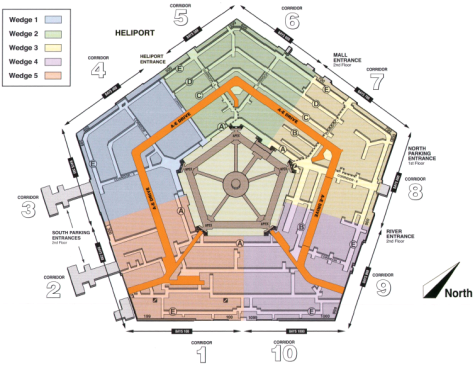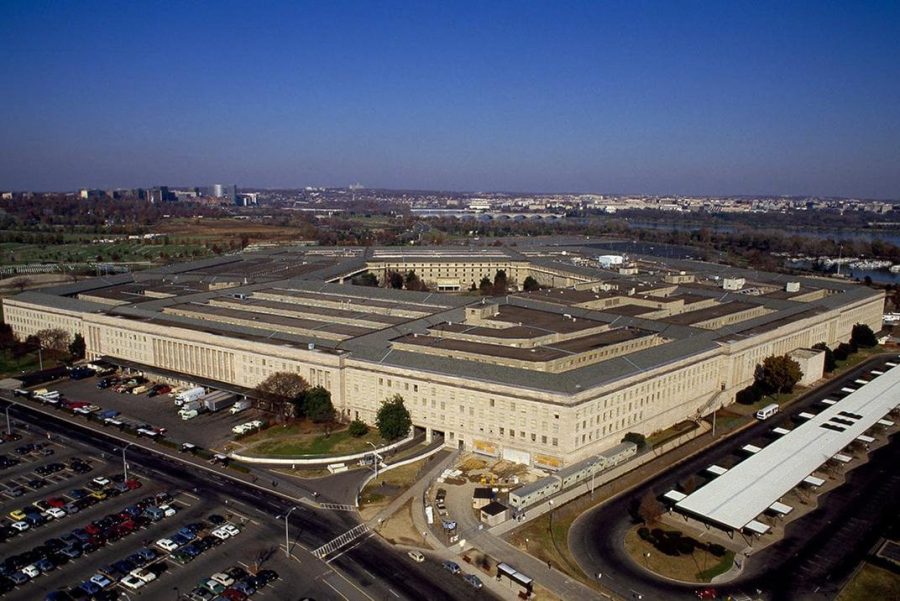Photo via Carol M. Highsmith in Smithsonian Magazine
View of the south parking entrances which include the second and third corridors. This also shows the east side of the building which is the first and tenth corridors.
Fear or Safety? The Pentagon: A Critic
As we are halfway through President Biden’s term, we’re entering into a time of political reflection. I chose to reflect on the U.S. government as a whole, and while doing this, I became intrigued by the infamous Pentagon’s history. While falling down a historic rabbit hole, I realized the corruption and arguable actions of people in powerful positions got away with.
With technology advancing and information circulating, we’re given the opportunity to pick apart our countries past and question what used to be seen as unquestionable, and that’s exactly what I’m going to do.
The Pentagon is located in Arlington County, Virginia. It’s the world’s largest office building, with 6,500,00 square feet of office space, 7,754 windows, 17 ½ miles of corridors, and peculiar architecture.

Since the Pentagon is so big, you would expect it to be quite strenuous to walk from one end to another, but surprisingly, that’s incorrect. The Pentagon was built with a spoke-hub design, which, according to the U.S. Department of Defense, means “it takes only about 7 minutes to walk between the furthest two points in the building.” A Spoke-hub design is made for transport time optimization, connecting the routes to the central hub. When it comes to levels, there are less than assumed. The Pentagon consists of five above-ground floors and two below-ground floors. From a bird’s eye view of the Pentagon, you will notice a five-acre central courtyard on the ground floor shaped like a pentagon. This courtyard is informally known as “ground zero,” which was nicknamed during the Cold War.
Now let’s talk about the people involved in creating this building, which I think is the more questionable part.
The Pentagon was designed by George Bergstrom and built by general contractor John McShain. Construction began on September 11th, 1941, and wrapped up on January 15th, 1943. There were more than 15,000 workers on-site around the clock, which caused the construction to move quickly. The initial budget was $35 million, and the final cost was $63 million.
On August 1941, Col. Leslie Grove, an Army Corps of Engineer officer, took a leading role in the construction. On September 1942, he was taken off the Pentagon project and put in charge of the “top secret” Manhattan project, A.K.A., the development of America’s first atomic bombs, which would go on to massacre over 220,000 innocent people in Nagasaki and Hiroshima, Japan. Grove is said to have no regrets when looking back on the development, nor did he doubt that it assisted in ending the war.
Crazy coincidence, right?
A building some consider symbolic and an embodiment of US strength was under the supervision of one of the men responsible for a severely destructive weapon that killed and destroyed thousands of lives. This explains why some people view the Pentagon as a “temple of death” and a symbol of violence and militarism.
From my standpoint, I don’t know how to feel about the Pentagon. The public doesn’t know 100% of what happens there, nor will any official personnel tell the public anytime soon. However, its creation wasn’t the worst decision in the world, considering it was the first desegregated building in Virginia. In June 1941, President Roosevelt signed an executive order the previous year stating that there would be no discrimination against government workers based on race, creed, color, or national origin. There are also negative aspects; as I mentioned, Col. Leslie Grove was in charge of the Pentagon’s construction, and then his next assignment was working on atomic bombs, which he continued to not regret even after the fallout.
It’s important to consider our government isn’t perfect, nor is any; it’s crucial to be aware of who’s in control and their history. Our whole lives were told not to question authority, but where’s the fun in that? Ignoring our country’s faults makes us just as responsible for their transgression. We can’t say we want what’s best for the world if we can’t even own up to our unjust behavior.
